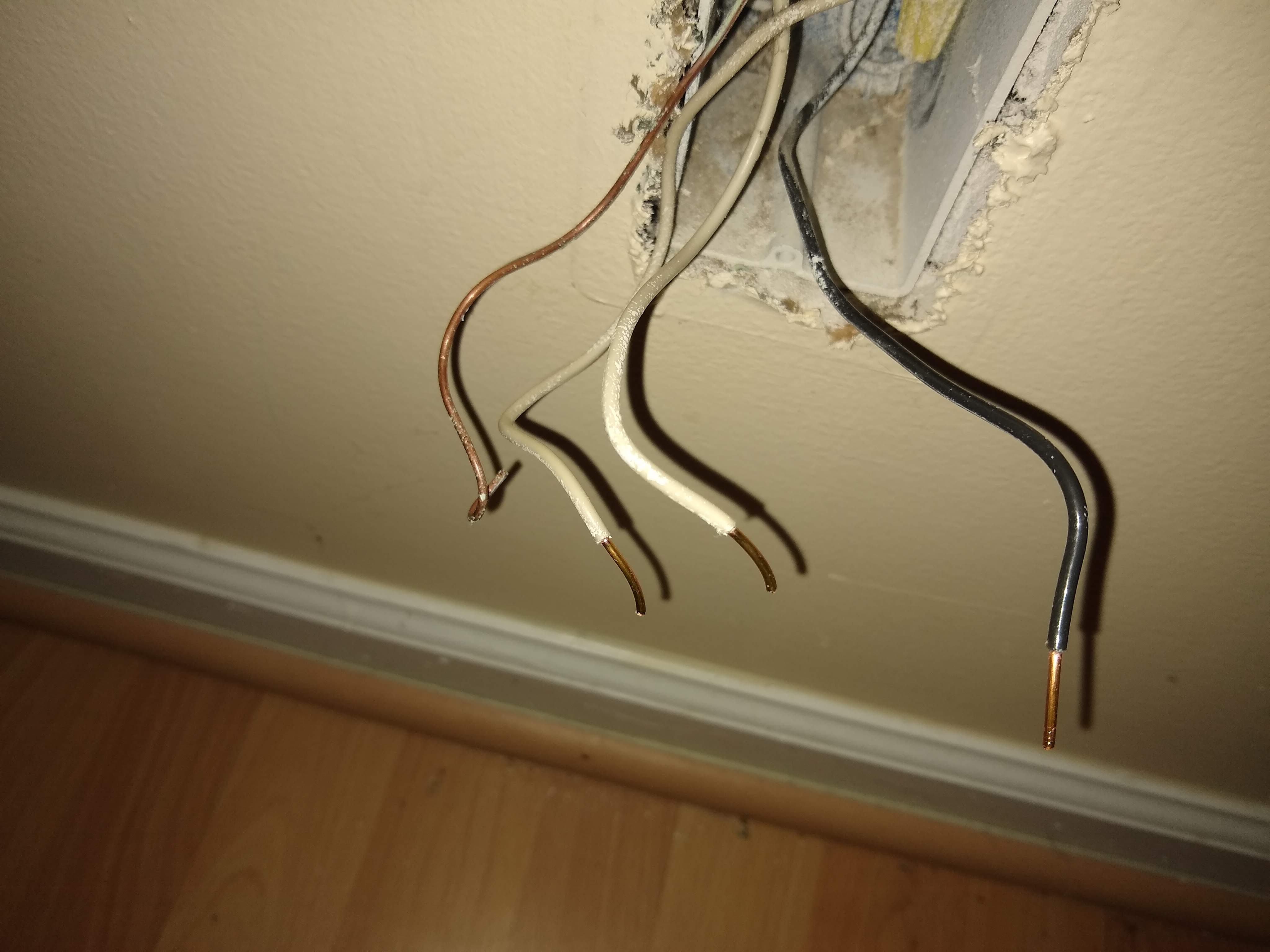For the last month or so I've been getting a strange smell in my house that we bought 6 months ago. The smell is not obvious, but smells a little burnt to me, but my wife thinks it smells like a stink bug.
Today I found that the smell appears to be coming from an electrical outlet. So, I disconnected the outlet. The outlet that I disconnected doesn't smell anymore, but the smell still persists from the box that the outlet was in.
I measured the voltage using my volt meter of these wires, and got very strange readings. Note there are 2 white wires, a black wire, and a bare wire. (picture attached)
White1-White2: 118VAC
White1-bare: 118VAC
White1-black: 72VAC
White2-black: 14VAC
White2-bare: 0VAC
Black-bare: 14VAC
So that is very wierd. I would guess the 14VAC is just some stray capacitance. But why is there a 72VAC? the White1-White2 having a difference is also very strange, I wonder if whoever installed it a long time ago got the wrong colored wires.
The 2 whitewires were definitely wired to the same side of the outlet before. So, they must have been linked together before. So I touched the 2 white wires together, expecting the circuit breaker to trip if there is a short. But the circuit breaker didn't trip.
So, give these 3 pieces of information, any theories on what is going on?
- Burnt/stink bug like smell from box behind outlet
- Strange and unexpected voltage readings
- Touching the 2 white wires together that measured 118VAC between them did not trip the circuit breaker
Some more info:
There are 3 big sheathed "bundles" coming into this box. The black wire comes from the bundle in the top right. The 2 white wires each come out of a separate bundle (top left and bottom left).
Also, there is only one black wire, but 2 white wires. Previously, one of the attachment points on the outlet that should have been another black wire was left unattached to anything.


